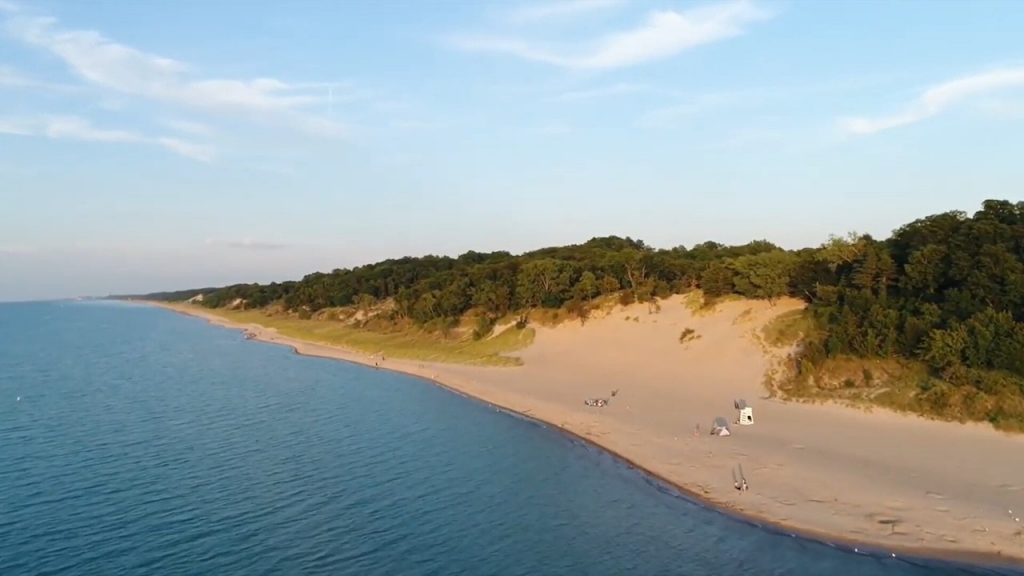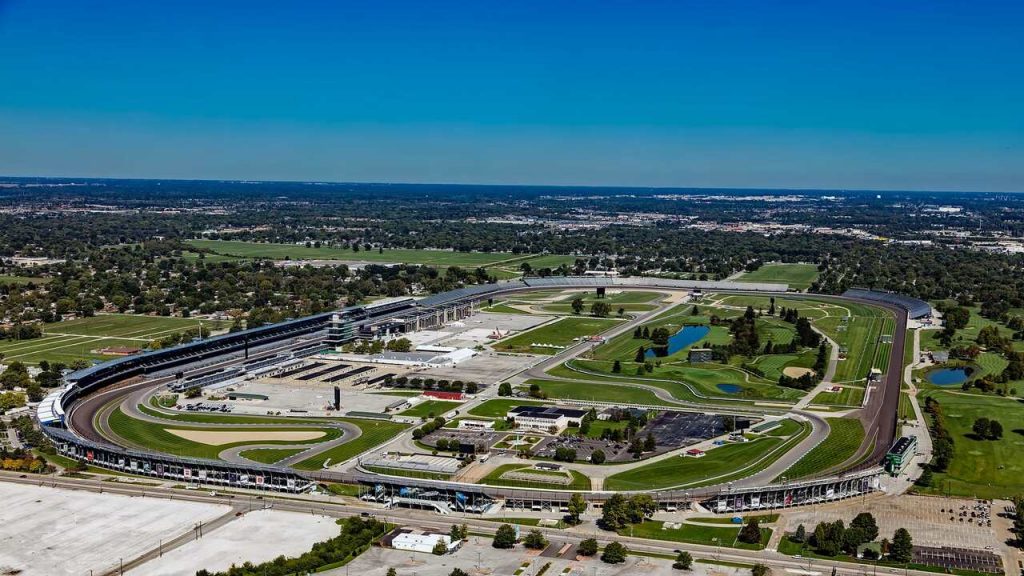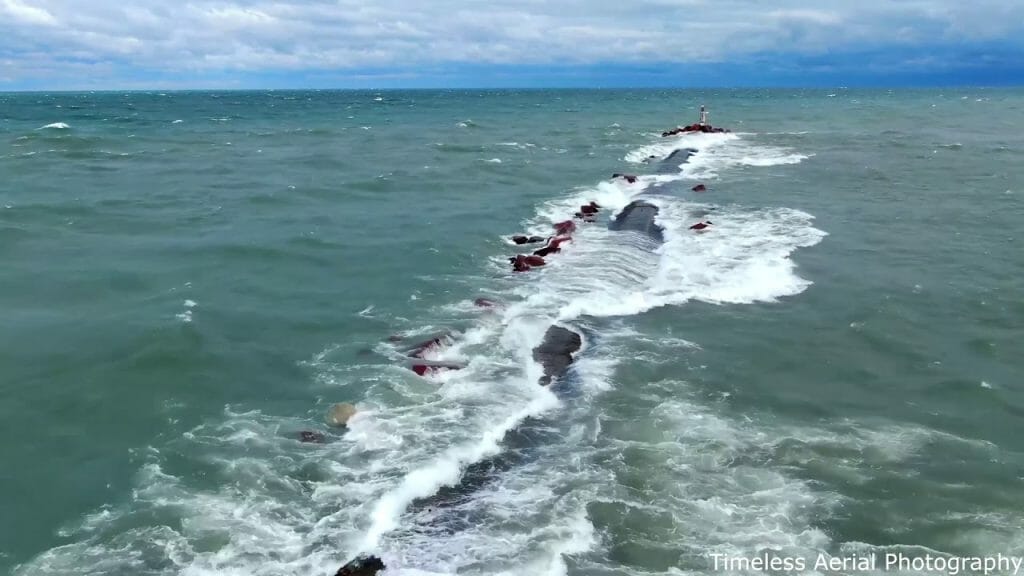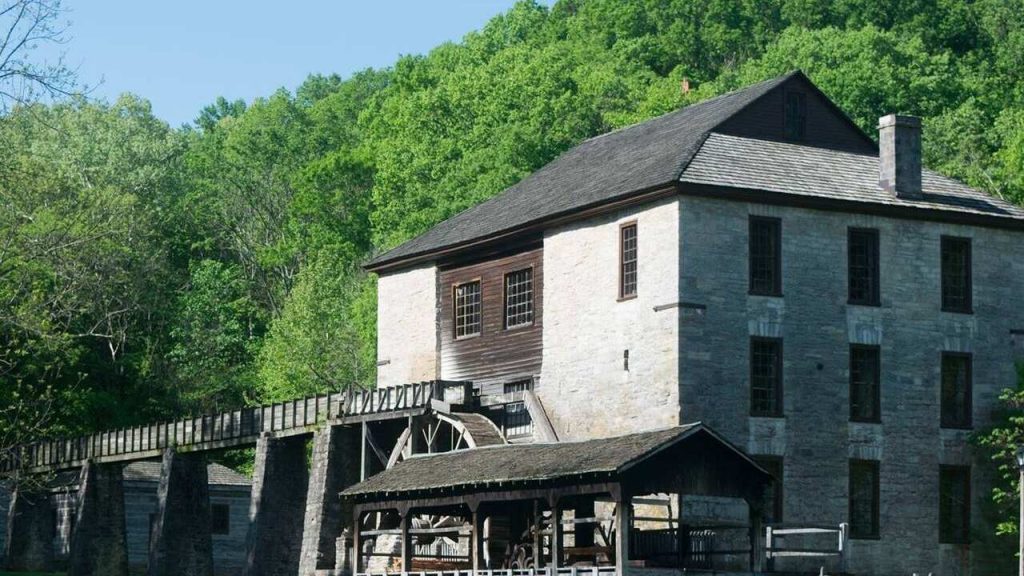Residents and visitors alike are always in awe of Indiana’s unique and vibrant culture, wildlife, and history.
In Indiana, there are countless sites to discover, and as you learn more about the nation, you will grow to love living there. What is the finest location to learn about a place’s nature, culture, and history? A landmark is the solution.
Here is a list of the most famous landmarks in Indiana to let you explore the state to your heart’s delight.
1. Indiana Sand Dunes National Park

The gorgeous 15-mile Lake Michigan lake shore that makes up Indiana Sand Dunes National Park, one of the newest national parks on the registry that was only established as such in February 2019, is well deserved of its new-and-improved designation.
This wilderness offers opportunities for hiking, biking, horseback riding, and other terrestrial outdoor recreation activities, in addition to the wide variety of water-based sports you can also engage in on the lake itself.
It also boasts the kind of impressive sand dunes that give it its name, as well as the kind of endless watery expanse typically reserved for oceanic coasts. Due to the abundance of migrating birds in the parkland, bird watchers are especially fond of the dunes. The dunes are home to more than 350 different bird species, including raptors and Sandhill Cranes.
2. Indianapolis Motor Speedway

The Indianapolis 500 is the reason it’s known as the “Indy 500”; yet, this illustrious race is far from the only one held at the Indianapolis Motor Speedway. The Indianapolis Motor Speedway is one of the biggest and most well-known motor racing venues in the country. Any lover of NASCAR or the Grand Prix must watch it.
This spectacular racetrack, which serves as the home of the IndyCar Series, NASCAR Cup Series, and other racing series, is the biggest sporting facility on earth. The Motor Speedway is just minutes away from attractions including the Children’s Museum of Indianapolis, the James Whitcomb Riley Museum and Historical Marker, and more.
3. Indiana State Museum
The Indiana State Museum is a museum that may be found in the heart of Indianapolis, Indiana. The museum features displays on Indiana’s science, art, culture, and history from the prehistoric era to the present. The museum was founded in 1869, and it has a significant emphasis on Indiana’s past and present. State Librarian R. Deloss Brown began gathering minerals and other oddities in 1862, during the Civil War, and put them in a cabinet.
This was the beginning of the first collection of the Indiana State Museum. A bill establishing “for the gathering and preservation of a Geological and Mineralogical Cabinet of the Natural History of this State” was passed by the Indiana General Assembly in 1869. The collection quickly turned into a type of museum, filled with an assortment of oddities and artifacts.
The biggest IMAX theater in the state is also located there. The Indiana State Museum is also in charge of managing a number of state sites, including Angel Mounds and the Levi and Catherine Coffin House.
Take a look at our list of the best places to visit in Indiana.
4. Lake Michigan

One of North America’s five Great Lakes is Lake Michigan. After Lake Superior and Lake Huron, it is the second-largest Great Lake in terms of volume and surface area. Its basin is connected with Lake Huron’s to the east through the constricting Straits of Mackinac, giving it the same elevation on the surface as its eastern counterpart; theoretically, the two lakes are one.
One of the five Great Lakes in the United States, Lake Michigan is shared by the states of Indiana, Wisconsin, Illinois, and Michigan. The Ojibwa term “Michi-gami,” which translates to “great water,” is where Lake Michigan gets its name.
The Indiana Dunes National Park includes the south side of the lake, which is located there. The south shore is a well-liked destination in the summer since it is dotted with immaculate beaches.
5. Spring Mill State Park

Spring Mill State Park, another must-see Indiana state park, is famed for its unusual caves and sinkholes. It also has a charming settlers’ hamlet and numerous CCC-built homes from the 1930s. The nearby Gus Grissom Memorial honors a native Mitchel lite who was also one of the Mercury Seven astronauts who perished during the unsuccessful Apollo 1 mission.
The Spring Mill State Park Nature Center has a bird-watching window, a close-up view of live snakes, and a wealth of instructional and educational materials about the park itself. Spring Mill State Park is located in the northwest corner of the state, almost halfway between Louisville and Bloomington.
6. Paoli Peaks
It’s one of Indiana’s most interesting sights. Skiers, snowboarders, snowboarders, and tube riders may all use Paoli Peaks.
One of Indiana’s most remarkable sights is its own ski bowl, Paoli Peaks. In the southern part of the state, on the fringes of the Hoosier National Forest, is a ski area called Paoli Peaks that is also open to snowboarders, snowboarders, and tubers in addition to those who want to ski. This location is fairly accessible for beginners and provides onsite food, housing, and shops.
It is built into a natural hill that is just under 1,000 feet in elevation and features a 300-foot vertical drop. For those starting completely from scratch, equipment rentals and lessons are also offered.
These are the best historical sites in Indiana.
7. The Broad Ripple Park Carousal
The Broad Ripple Park Carousel is a stunning and engaging artifact from the past. This carousel, which was built in the early 1900s and is located on the top floor of the Children’s Museum of Indianapolis, is more than a century old. The carousel was a local favorite when it was first located in Broad Ripple Village, but in 1956, a building collapse seriously damaged it.
The remaining carousel animals were used in holiday displays during the ensuing years before being purchased by the museum in the 1960s. It has been repaired, and the museum now has it in flawless operating condition. Family members adore the Broad Ripple Park Carousel, which is a distinctively famous icon in Indiana. Your kids may even ride the carousel, which has 42 different animals on it, including lions, horses, and giraffes.
8. Mounds State Park
Indiana is not an exception to the fascinating and extensive heritage of Native American culture that characterizes the Midwest. The Adana-Hopewell people lived in an ancient civilization in Mounds State Park, which is close to I-69. Today, 10 earthworks from this civilization, including the recognizable mounds, may still be found there.
Fun educational programs are also held on the property to aid visitors in better understanding the history of the area they are currently standing in. A nature center, a pool, and a campground are also present.
Mounds State Park is a great place to amuse yourself and is located close to the town of Muncie, less than an hour outside of Indianapolis. In the vicinity, there are further wilderness areas to discover, including Ouabache State Park to the north and Summit Lake State Park to the south.
9. West Baden Springs Hotel
The 200ft (61m) dome gracing the atrium of the West Baden Springs Hotel, a must-see historical site in Indiana, is its claim to fame. The region was formerly home to a thriving salt mine with numerous mineral springs. In 1832, William A. Bowles acquired the property and built a spa there.
The current hotel was built in 1902, and writers from all across the country frequently referred to it as the “Eighth Wonder of the World.” There were theaters, golf courses, and a ton of restaurants at the hotel and the surrounding resort.
The present hotel was renovated and inaugurated in 2006 after 13 years of abandonment and many sales following the Great Depression. Today’s visitors can take advantage of amenities including heated indoor and outdoor pools, hot tubs, opulent rooms, and suites, as well as a formal dining area with fine cuisine.
10. The Abraham Lincoln Boyhood Home and National Museum
On the land where Abraham Lincoln grew from a young boy of seven to a man of twenty-one, the Abraham Lincoln Boyhood Home and National Museum is situated. From 1816 through 1830, Lincoln and his family resided on the property. The monument was included in the National Register of Historic Places in 1966 and is considered one of Indiana’s most popular historical attractions.
You can visit the Lincoln Boyhood National Memorial as well as the nearby farmlands to learn more about Lincoln’s upbringing. Lincoln Boyhood Home is an important historical site located in what was once frontier Indiana.
Lincoln gained a solid sense of honesty, right and wrong, and an ongoing appreciation for hard labor while he was a resident of Indiana. These were all fundamental values that he would carry with him into his presidency. A replica of a pioneer farm, a memorial at the Cabin Site, and Nancy Lincoln’s burial are all located inside the parkland.
11. Barker Mansion
During the Gilded Age, John Barker Sr. constructed Barker Mansion as a representation of opulence. The brick, two-story original home, which was constructed in 1857, is now the back wing. Barker was a railroad industrialist and philanthropist. The property has 38 bedrooms spread out over two storeys and was built to resemble a medieval English manor house.
Today, Barker Mansion serves as a museum and community hub. There are various pieces of art and authentic furniture from the heyday of the home in the museum. Watch out for the 11 impressive mahogany and marble fireplaces. 1975 saw its inclusion on the National Register of Historic Places. The Haskell and Barker Historic District is where it is situated.
12. Connor Prairie
Conner Prairie, another destination in the Indianapolis area, is situated on the northeastern outskirts of the city, not far from wilderness areas like Summit Lake State Park and Mounds State Park. Conner Prairie is a fascinating living history museum that preserves and recreates prairie life in 1836 along the banks of the White River.
It is both a historical site and a family-friendly vacation spot. An 1859 hot air balloon ride, the Civil War campaign, life in a Lenape Indian camp, and other historical reenactments are all brought to life by devoted historical reenactors.
Conner Prairie is home to a multitude of year-round attractions as well as a variety of irregular activities, such as monthly events like “Taste the Past,” a Headless Horseman ride in the fall, candlelight tours, and a county fair. It hosts Christmas festivities and feasts, Hearthside Suppers, and American Civil War reenactments.
13. Grouseland
William Henry Harrison lived in Grouseland when he served as Indiana’s governor from 1800 to 1812; it was the state’s first brick house. The residence is filled with memorabilia from the life and administration of the ninth President of the United States. Harrison was the 9th President of the United States, yet his presidency was brief because he passed away from pneumonia just one month into it.
Harrison’s stint as president was equally brief. This 1804-built house has been converted into a museum and houses a wonderful collection of art, furniture, and memorabilia. Additionally, information about Harrison’s life and career is available to visitors.
14. Soldiers and Sailors Monument
The Soldiers & Sailors Monument, a famous American landmark located in the center of Indianapolis, honors the state’s Indian veterans of numerous American conflicts, including the Revolutionary War, the War of 1812, the Mexican War, the Civil War, the Frontier Wars, and the Spanish-American War.
This unusual obelisk is over 285 feet tall and is made of gray oolitic limestone, making it only 15 feet shorter than the Statue of Liberty. It cost more than half a million dollars to build back in 1902, which is equivalent to more than $13 million in modern currency. This monument is a fantastic addition to your schedule because it is a popular city meeting place and a must-have photo opportunity.
The Soldiers & Sailors Monument is situated in the heart of Indianapolis, close to the White River and a variety of museums, eateries, stores, and attractions.
15. Indianapolis Zoo
The 64-acre (26 ha) Indianapolis Zoo is a public aquarium, botanical garden, and non-profit zoo in Indianapolis, Indiana, in the United States. The Indianapolis Zoological Society, which was incorporated in 1944, opened its first zoo at George Washington Park in 1964. In 1988, the modern zoo made its debut at White River State Park, not far from Indianapolis.
It is one of the biggest privately supported zoos in the United States. You may visit and learn about animals from all over the world at the 64-acre park. You can visit the Simon Skjodt International Orangutans Center to learn interesting facts about orangutans and the Oceans Building to learn about penguins and their habitats. Zebras, cheetahs, and giraffes are just a handful of the many creatures you can view.
The Indianapolis Zoo is one of the most popular tourist destinations in the city, with 1.1 million visitors in 2019. It was home to more than 1,400 animals of 235 species in 2020, while the adjacent White River Gardens housed more than 50,000 plants of almost 3,000 kinds.
16. Ernie Pyle Museum of World War II History
In 1900, Ernie Pyle was born in Dana, Indiana, where he grew up and attended school. The Second World War inspired him to become a war reporter when he was a journalist.
He wrote about what it was like to be a soldier and the difficulties they experienced in his articles. Ernie Pyle’s birthplace and a museum dedicated to his career as a WWII journalist are both located on the property.
17. Indiana Dunes National Lakeshore
One of Indiana’s most beautiful national parks, Indiana Dunes National Lakeshore is home to some of the state’s most beautiful beaches. Aside from the miles and miles of hiking trails and soft sand beaches, there’s enough to keep you occupied. It’s regarded as one of Indiana’s top tourist attractions by many.
The locations mentioned are accessible throughout the year. The pleasant climate and friendly people of Indiana make it a fantastic destination for your quick excursions. Decide on any of Indiana’s well-known landmarks for your upcoming trip and don’t be afraid to do so.

